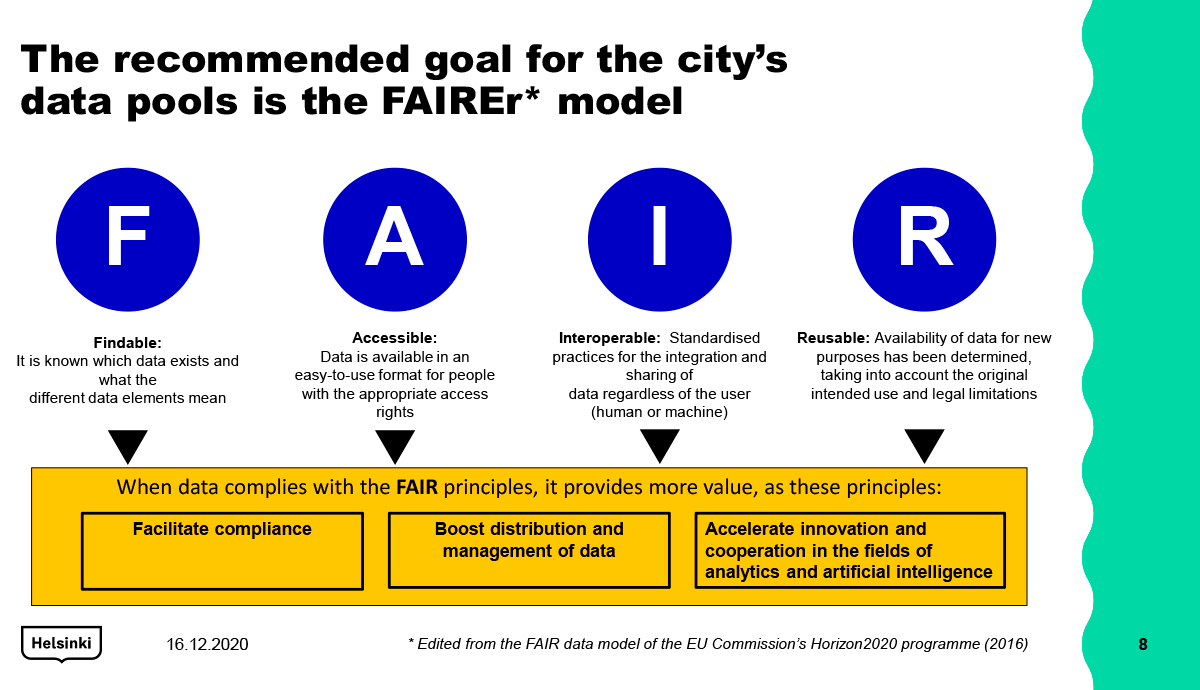3.3. FAIR – a City-wide model for the management of information resources
The City’s information resources are managed in accordance with the FAIR model of the EU Commission’s Horizon 2020 programme. The model defines the principles for the fair and efficient utilisation of data in an organisation, as presented below. In addition to these more technical principles, other boundary resources that support and facilitate the utilisation of data are listed in Section 2.3.
- Findable: Data users can easily find the information that they need. To facilitate findability, the City maintains a data catalogue, a special search service, that contains information about data, i.e. metadata. The metadata includes information relevant to the findability and utilisation of the associated data, such as where the data can be found, a persistent data identifier, information about the content of the data and any restrictions on the utilisation of the data.
- Accessible: Data or its metadata is retrievable by its identifier using a standardised communications protocol. The protocol is open, free, and universally implementable and allows for an authentication and authorisation procedure, where necessary.
- Interoperable: When data uses commonly agreed-upon identifiers, concepts and ontologies, the data becomes more interoperable with other data. To improve the interoperability of data, the City will adopt national concept definitions as they are completed. In addition to striving for internal interoperability, the City will also endeavour to make its data interoperable with external operators, at national level and possibly at EU level as well.
- Reusable: The City will invest in the utilisation of data taking into account not only the original purpose of data, but its reusability as well. Data is reusable when its content is richly described by a plurality of accurate and relevant attributes, when its use for multiple purposes is taken into account in its access rights, when a clearly formulated usage license is provided, and when the data is always associated with its provenance.
Figure 3. The FAIR model for the management of information resources.
